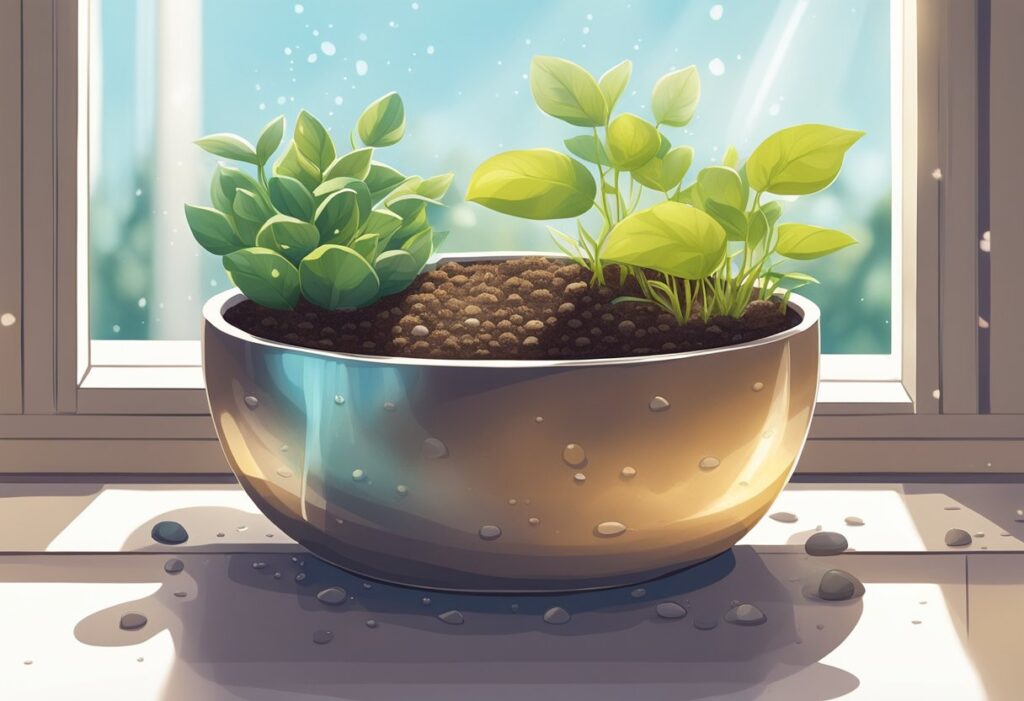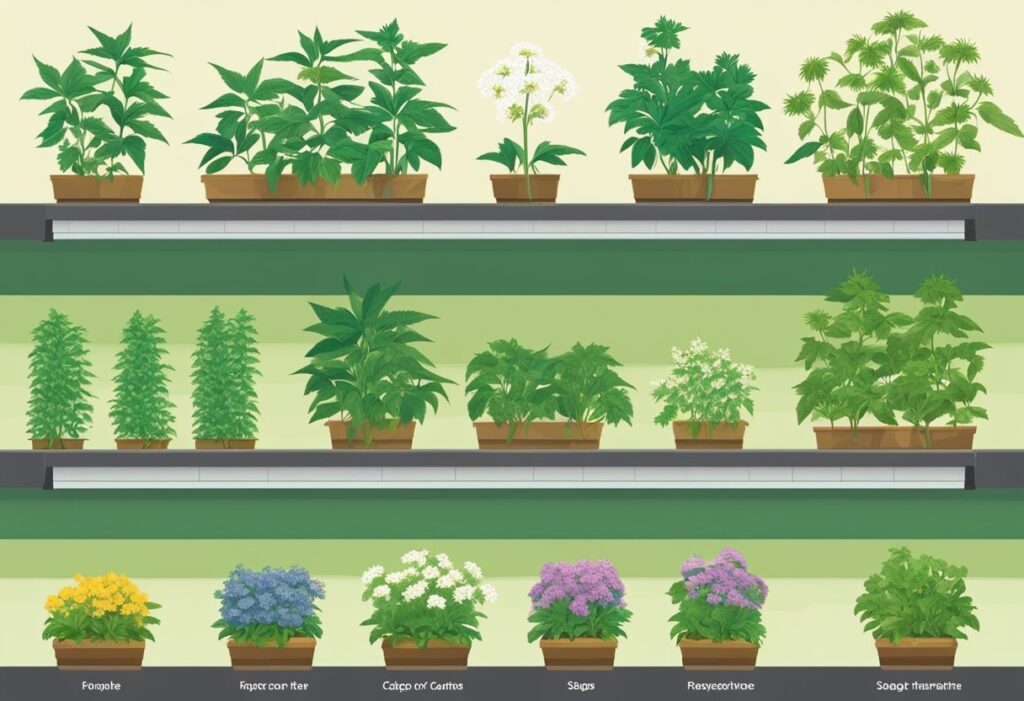
Autoflowering cannabis strains are a result of crossbreeding traditional Indica and Sativa strains with the hardy and fast-growing Ruderalis plant. This unique crossbreeding has given autoflowers the ability to have a shorter, predetermined life cycle rather than relying on light cycles like traditional photoperiod strains.
The life cycle of autoflowers begins with the germination of the seed. From there, the plant enters the vegetative stage, where it focuses on developing strong roots and foliage. It then transitions to the flowering stage, where buds develop and mature. The entire process, from seed to harvest, takes around 8-12 weeks, making autoflower seeds in Canada an excellent choice for growers seeking quick and efficient cultivation.
The main difference between autoflowering and photoperiod cannabis strains lies in their response to light cycles. Autoflowers do not depend on changes in light to enter the flowering stage; instead, their life cycle is based on time, making them grow faster and reach their final stage of maturation more quickly.
On the other hand, photoperiod varieties depend on changes in lighting conditions to enter the flowering stage, which requires careful monitoring and manipulation of light exposure. While photoperiod strains may generally produce larger yields and offer a more extensive variety, autoflowers thrive due to their rapid growth and ease of cultivation, particularly in Canadian climates.
When choosing the right autoflower seeds in Canada, several factors should be considered:
By selecting the appropriate autoflowering cannabis strains for your Canadian growing needs, you can take advantage of the unique benefits that autoflowers have to offer, such as their rapid growth and straightforward cultivation process. Farmers Lab Seeds offers a wide variety of top-quality autoflower seeds in Canada to suit various preferences and growing scenarios.

When growing autoflower seeds in Canada, it’s essential to start with high-quality seeds from a reliable source like Farmers Lab Seeds. To germinate your autoflower seeds, you have a few methods to choose from, such as the paper towel method or planting directly into soil.
The paper towel method involves placing seeds on a damp paper towel, covering them with another damp paper towel, and sealing the paper towel in a plastic container or between two plates. Ensure the environment is dark and let your seeds germinate for a few days. Afterward, transfer the germinated seeds to a soil mix with a suitable pH, containing enough potassium and phosphorus for healthy growth.
Once your autoflower seeds begin to germinate, it’s crucial to provide them with optimal growing conditions. Here’s what you need to ensure the success of your seedlings:
By following these guidelines for pre-germination and early-stage care, you’ll be on your way to successfully growing amazing Autoflower seeds in Canada. Remember, getting started with high-quality seeds from a trusted source like Farmers Lab Seeds is crucial for the best results. Happy growing!

Growing autoflower seeds in Canada can offer high-quality yields, thanks to their ability to adapt to various environmental conditions. As they transition from the vegetative to the flowering stage, there are a few essential techniques to improve your plant’s yield and potency.
Training: Employing the right training methods can enhance your autoflower plant’s light exposure, leading to improved yields. Low-stress training (LST) is ideal, as it allows you to gently manipulate your plant’s growth without causing harm. By carefully bending and tying branches down, you can create an open canopy, letting light reach all parts of the plant.
Nutrients: Cannabis plants demand different nutrient ratios during their growth stages. In the vegetative stage, increased nitrogen benefits the plant’s development, while phosphorous is crucial during the flowering stage. Maintaining the appropriate nutrient balance promotes healthy growth, therefore maximizing yield and THC production.
Here’s a simple nutrient guide:
| Growth Stage | Nutrient Ratio |
|---|---|
| Vegetative | High Nitrogen, Low Phosphorous |
| Flowering | Low Nitrogen, High Phosphorous |
Remember to monitor your autoflower plants’ nutrient intake and engage in a consistent feeding schedule to enhance your plants’ performance.
Harvest Time: Determining the right time to harvest your autoflowers can heavily influence the quality and potency of your yield. When your plant’s pistils start turning brown and the trichomes appear milky or amber-colored, you are typically in the right window to harvest.
Take note of the various stages of trichome development for optimal cannabinoid content:
Drying and Curing: After you harvest your plants, ensure you properly dry and cure the buds for the optimal taste, aroma, and potency. Hang your buds in a dark, cool space with minimal humidity, allowing them to dry for about 7-10 days. Once the buds feel slightly crispy on the outside, it’s time to place them in airtight containers for curing. Keep the containers in a cool, dark location, and periodically open them to let in fresh air. The curing process takes about 2-4 weeks, but the enhanced bud quality you’ll experience truly justifies the wait.
As a savvy grower, implementing these tips while growing your autoflower seeds in Canada will help you attain a consistent, bountiful, and potent harvest. So give your plants the love, light, and care they need to flourish into robust producers.
The ideal conditions for growing autoflower seeds outdoors in Canada include a suitable soil mix, proper pH, and efficient nutrient absorption. You should select soil with good drainage, sufficient aeration, and rich organic nutrients. The recommended pH for water/nutrient solution is between 5.5 and 6.5, as it allows autoflower cannabis plants to efficiently absorb nutrients and remain healthy.
To maximize the yield of your autoflowers in Canada’s climate, you need to adapt your growing practices to the specific regional conditions. Regularly monitor and adjust the humidity, temperature, and light exposure according to the seasonal variations. With proper care and environmental adjustments, you can expect a bumper crop of autoflower seeds in Canada.
Autoflower seeds typically take 3 to 10 days to germinate. During this process, the seeds need a moist environment, with relative humidity levels of between 70% and 90%. The optimal temperature range for germinating autoflower seeds in Canada is around 20°C to 25°C, ensuring consistent, healthy growth.
Yes, autoflower seeds can be grown year-round in Canadian regions, provided you meet the necessary environmental requirements. Auto-flowering seeds have shorter growth cycles and can typically be harvested two to three months after germination. By maintaining optimal indoor conditions or using greenhouses, you can adjust your planting schedules to ensure a consistent year-round supply of autoflower seeds in Canada.
An effective schedule for feeding and watering autoflowers in varying Canadian seasons includes regular observation and adjustments according to the specific needs of your plants. Autoflowers usually require less frequent feeding and watering compared to photoperiod plants. During warmer months, you may need to water more often, while reducing the frequency during cooler seasons. Monitor your plants’ growth and adjust the nutrient and water intake accordingly to ensure optimal growth and flowering.
We ship and deliver world wide via USPS and various couriers.
We offer a wide range of secure and anonymous online payment options.
We care about you, our customer. Please contact us with any questions or concerns.
Find out more about the benefits of being a loyal and regular customer.
WE ARE EVERY GROWERS ONE STOP SHOP TO ACQUIRE PREMIUM CANNABIS SEEDS FOR SALE IN THE USA, CANADA AND AUSTRALIA

Farmers Lab Seeds 2024, | All Right Reserved
Seeds are sold as novelty items, souvenirs, and collectibles. They contain 0% THC. We encourage our customers to check the legislation in their Country, State, Province, and Municipality prior to purchasing items from our store. We do not provide growing information.
All seeds are sold as hemp, and lab tested under 0.3% THC. This product is not for use by or sale to persons under the age of 21. This product should be used only as directed on the label. It should not be used if you are pregnant or nursing. Consult with a physician before use if you have a serious medical condition or use prescription medications. A Doctor’s advice should be sought before using this and any supplemental dietary product. All trademarks and copyrights are property of their respective owners and are not affiliated with nor do they endorse this product.
These statements have not been evaluated by the FDA. This product is not intended to diagnose, treat, cure or prevent any disease. Individual weight loss results will vary. By using this site, you agree to follow the Privacy Policy and all Terms & Conditions printed on this site. Void Where Prohibited by Law.